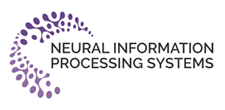
ΑΙhub.org
How to spot AI hype

Hype itself is not inherently bad, but it sets inflated expectations about the technology, drives unnecessary fears, and detracts from meaningful discussions about today’s technology. We’ve already talked about how to avoid creating hype, but it’s equally important to know how to recognise it.
So how can you spot it and avoid the hype train?
1. Sensational and absolute language
Examples: “AI will completely revolutionise healthcare / construction / agriculture ”, “X is the most important development in AI – ever”.
Words like “best”, “worst”, “ever” “never” can be useful as a shorthand, but lack nuance. If you see phrases like this (especially in a headline) remember that there is likely to be more to the story.
2. There are no limits!
Examples: “AI can now predict the weather with 100% accuracy.”
No one is perfect and neither is AI so any claims that don’t acknowledge its limitations are likely to be hype. Look out for words and phrases such as “may”, “might”, and “could” that indicate that there are limitations without directly specifying them.
3. Emotive language
Examples: “Terrifying future for millions of workers as AI takes over”
Descriptions that evoke strong emotions are attention grabbing and engaging, but are not an accurate reflection of the technology.
4. Anthropomorphism
Example: “Depressed security robot throws itself into fountain”
Describing AI in terms that would normally be used for humans or living things is inaccurate as it ascribes abilities (e.g. having feelings) that it is not capable of.
5. Leaning into biases
Example: “If you think robots will steal your job – you’re completely right”
People are more likely to pay attention to and accept information that aligns with their beliefs. To avoid being drawn in by hype, evaluate claims that align with your values as thoroughly as information that doesn’t.
6. Underlying motivation
Example: “‘AI is the future of housework’ says maker of robot vacuums.”
Think about why the source could be using hype: Are they trying to change your mind, or behavior, or sell you something? Who benefits from the hype?
7. Personalities over science
Examples: “AI Company X is a legacy of the genius of person Y”
While people are ultimately responsible for creating AI, discussions focused on people and personalities (both good and bad) distracts from the science itself.
8. Unrealistic or unrelated images
Examples: Sci-fi film robots, glowing blue brains
It’s true that representing AI visually can be difficult, but images of science fiction robots or fantastical images creates the impression of greater advancement than is realistic.
9. Vague claims
Examples: All of the above.
Headlines are brief by necessity, but the rest of the story should give more information about how the technology works. For example, explanations about the AI’s specific task, the data, algorithm, and hardware used.
10. If in doubt, check the original source
If you spot hype, or are unsure, one of the best things you can do is check an original source, the journal or conference proceedings. If you can’t find any, it is more likely that the story is all hype with no substance.
We hope you find this guide to spotting AI hype helpful, and you can also find all the tips in this PDF.
tags: guidelines, quick read










